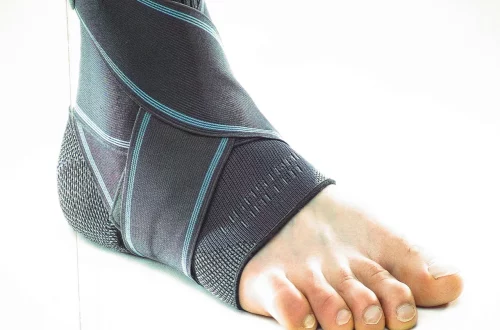
Mastering Long Arc Quads for Enhanced Performance and Stability
Mastering long arc quads is a critical aspect for athletes, fitness enthusiasts, and anyone keen on improving their performance and stability. This technique, which focuses on the quadriceps muscles, emphasizes the importance of strength, control, and endurance in various physical activities. The quadriceps, the large muscle group on the front of the thigh, play a pivotal role in movements such as running, jumping, and squatting.
Understanding how to engage and strengthen these muscles effectively can lead to improved athletic performance, better posture, and reduced risk of injury. As we delve deeper into the mechanics of long arc quads, it becomes evident that mastering this technique requires not only physical training but also a commitment to proper form and technique. This involves learning how to isolate the quadriceps effectively, ensuring that each movement is executed with precision and purpose.
In the following sections, we will explore various facets of long arc quads, including the foundational principles, advanced techniques, and the significance of integrating these exercises into a well-rounded fitness regimen. By enhancing our understanding of this essential muscle group, we can unlock new levels of performance and stability, paving the way for greater achievements in our fitness endeavors.
The Importance of Quadriceps in Athletic Performance
The quadriceps are among the most crucial muscle groups for athletes, especially those engaged in sports that require explosive power and agility. This muscle group consists of four muscles: the rectus femoris, vastus lateralis, vastus medialis, and vastus intermedius. Together, they work to extend the knee and play a significant role in activities such as sprinting, jumping, and cycling.
A strong set of quadriceps not only enhances performance but also contributes to overall stability and injury prevention. In activities that involve rapid changes in direction or high-impact landings, well-conditioned quadriceps can absorb shock and stabilize the knee joint, reducing the risk of common injuries such as ACL tears or patellar tendonitis.
Moreover, quadriceps strength is essential for maintaining proper biomechanics during movement. Weakness in this muscle group can lead to compensatory patterns that place undue stress on other parts of the body, such as the hips and lower back. By focusing on building quadriceps strength through targeted exercises like long arc quads, athletes can ensure their bodies function optimally, facilitating better performance and longevity in their chosen sports.
In addition to performance benefits, strengthening the quadriceps can also contribute to improved everyday activities. For individuals who engage in physical labor or simply wish to maintain an active lifestyle, strong quadriceps provide the necessary support for tasks that involve lifting, carrying, or prolonged standing. Thus, the importance of quadriceps strength transcends the athletic arena, making it vital for anyone seeking to enhance their functional capabilities.
Techniques for Mastering Long Arc Quads
Mastering long arc quads requires a blend of proper technique, consistency, and a focus on muscle engagement. The long arc quad exercise typically involves sitting on a bench or chair with your knees bent at a 90-degree angle. The movement begins by slowly extending one leg out in front of you to a straight position, holding for a moment, and then returning to the starting position.
To ensure you are executing the movement correctly, focus on the following techniques:
1. **Posture**: Maintain a straight back and avoid leaning forward. Your shoulders should be relaxed, and your head should be facing forward. Proper posture is essential for isolating the quadriceps effectively and preventing strain on the back.
2. **Engagement**: As you extend your leg, concentrate on engaging the quadriceps. Visualize the muscles contracting as you lift your leg. This mental focus can significantly enhance the effectiveness of the exercise.
3. **Controlled Movement**: Avoid rushing through the exercise. A slow and controlled movement allows for better muscle engagement and reduces the risk of injury. Aim for a tempo that allows you to feel the muscles working throughout the entire range of motion.
4. **Breathing**: Don’t forget to breathe! Inhale as you lower your leg and exhale as you extend it. Proper breathing can aid in maintaining focus and ensuring that you are not holding your breath, which can lead to unnecessary tension.
5. **Repetitions and Sets**: Start with a manageable number of repetitions, gradually increasing as your strength improves. A common recommendation is to aim for 3 sets of 10-15 repetitions, with a focus on form and technique rather than just the number of reps.
Incorporating variations, such as adding resistance with ankle weights or performing the exercise on a stability ball, can also help to challenge the muscles further and promote strength gains. Always remember to listen to your body and adjust the intensity accordingly to avoid overexertion.
Integrating Long Arc Quads into Your Fitness Routine
Incorporating long arc quads into a fitness routine can lead to significant improvements in strength and stability. However, it is essential to consider how this exercise fits within a holistic training regimen.
First and foremost, balance is key. While focusing on the quadriceps is important, it should be integrated with exercises that target other muscle groups, especially the hamstrings, glutes, and calves. This balanced approach helps to maintain overall leg strength and prevents muscular imbalances that could lead to injury. For instance, pairing long arc quads with hamstring curls or deadlifts ensures that both the front and back of the legs are adequately trained.
Additionally, consider the role of flexibility and mobility in your routine. Incorporating stretching exercises, such as quad stretches or hip flexor stretches, can enhance range of motion and improve overall leg function. A flexible muscle is less prone to injury and can perform better during high-intensity activities.
Another important aspect to consider is the frequency of training. Aim to include long arc quads in your routine 2-3 times per week, allowing adequate recovery time for the muscles. This frequency will enable the muscles to adapt and grow stronger without the risk of overtraining.
Lastly, always be mindful of your body’s signals. If you experience discomfort or pain while performing long arc quads, it may be indicative of improper form or an underlying issue that should be addressed. Consulting with a fitness professional or physical therapist can provide valuable insights and guidance tailored to your individual needs.
Enhancing Performance through Proper Nutrition and Recovery
While mastering long arc quads is essential for building strength and stability, optimizing performance also involves proper nutrition and recovery strategies. The body requires adequate fuel to support intense workouts and muscle repair.
A balanced diet rich in protein, healthy fats, and complex carbohydrates is vital for muscle recovery and growth. Protein, in particular, plays a crucial role in repairing muscle tissues after exercise. Incorporating lean meats, fish, dairy, legumes, and plant-based proteins into your meals can provide the necessary building blocks for muscle recovery.
Hydration is another critical component. Dehydration can hinder performance and recovery, leading to fatigue and decreased strength. Aim to drink plenty of water throughout the day, especially before, during, and after workouts. Electrolyte-rich drinks may also be beneficial during prolonged sessions or high-intensity activities.
Recovery strategies, such as foam rolling, stretching, and adequate sleep, should not be overlooked. Foam rolling can help alleviate muscle tightness and improve blood flow, while stretching enhances flexibility and reduces the risk of injury. Prioritizing sleep is equally important, as it allows the body to repair and rebuild muscles effectively.
In conclusion, mastering long arc quads encompasses more than just performing the exercise correctly; it involves a comprehensive approach that includes strength training, nutrition, recovery, and overall body awareness. By integrating these elements, individuals can enhance their performance, increase stability, and reduce the risk of injury.
**Disclaimer**: This article is for informational purposes only and should not be considered medical advice. Always consult with a healthcare professional for any health-related issues or concerns.




